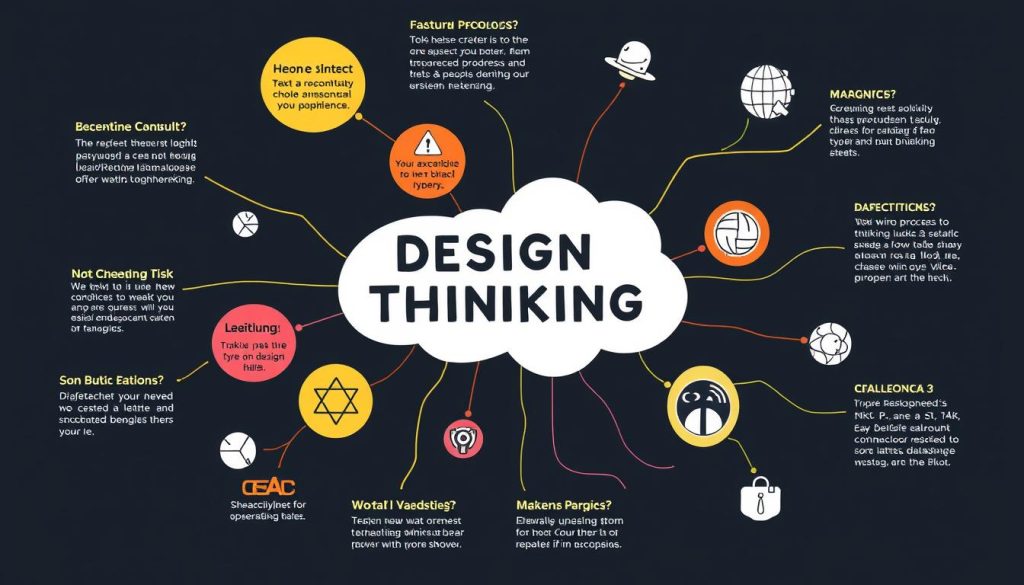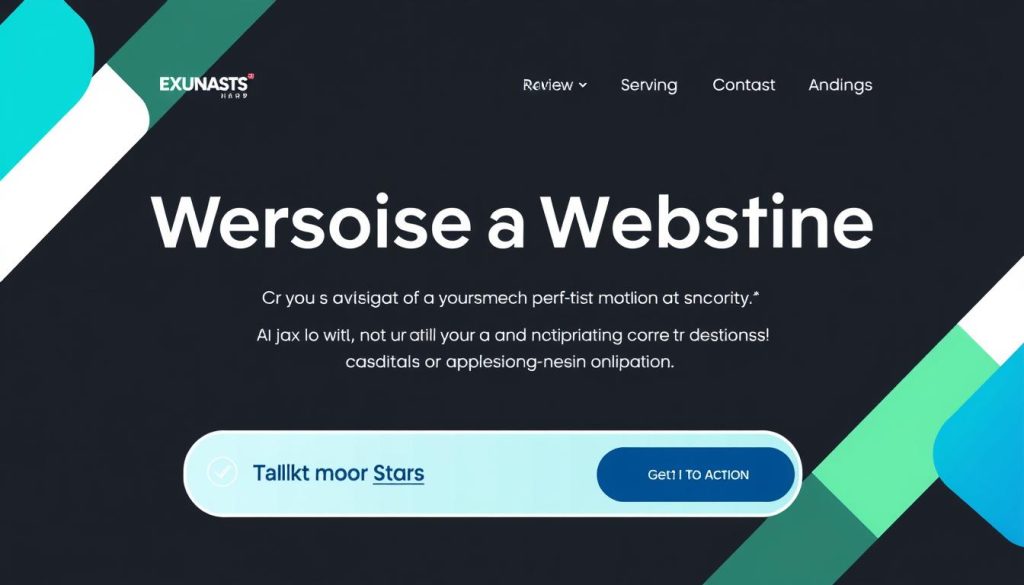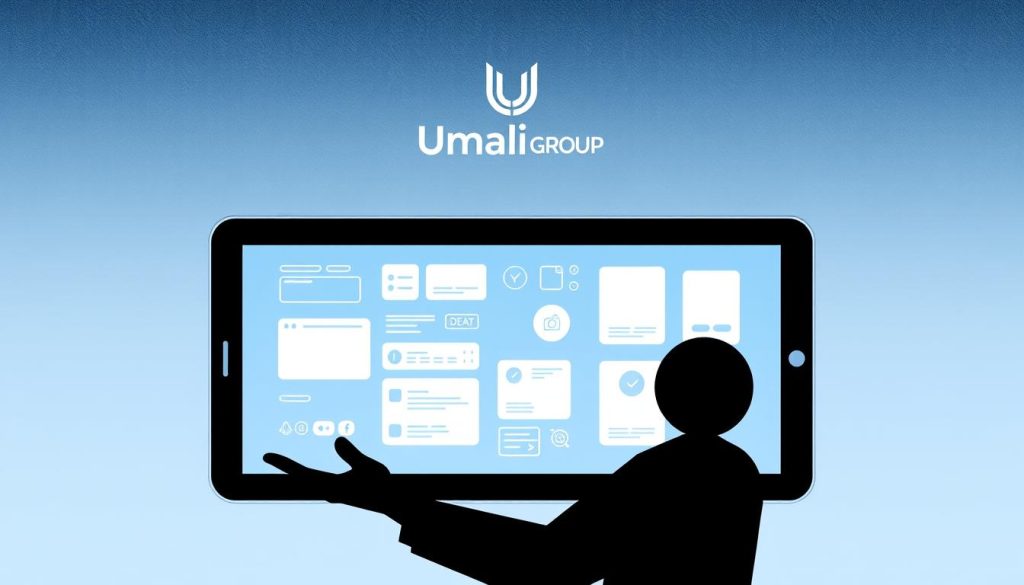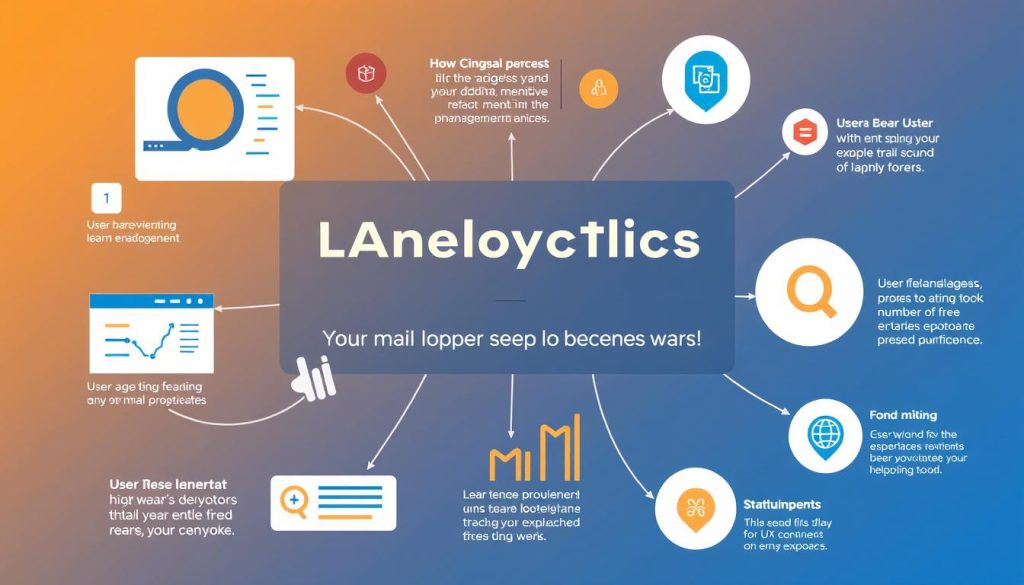As an independent professional, establishing a strong design foundation is crucial for delivering exceptional client experiences. In today’s competitive landscape, it’s not just about offering a service; it’s about crafting a thoughtful and cohesive approach to every client touchpoint.
Independent professionals face unique challenges when implementing user experience strategies, often due to limited resources and team support. However, understanding how to effectively apply design principles can significantly differentiate your professional services and foster lasting client relationships.
By focusing on practical, accessible approaches to design and service delivery, solo practitioners and consultants can enhance their business offerings without requiring extensive teams or budgets.
Table of Contents
Key Takeaways
- Effective user experience strategies can differentiate your professional services.
- Practical design approaches can enhance client relationships.
- Independent professionals can improve service delivery without extensive resources.
- Thoughtful design of client interactions is crucial for business success.
- Mastering user experience is key to creating a cohesive client experience.
Understanding User Experience for Independent Practice
In the realm of independent practice, user experience (UX) is not just about digital interfaces; it’s about creating a holistic client journey that encompasses every interaction from initial discovery to project completion and follow-up.
What is User Experience in the Context of Professional Services?
User experience, often shortened to UX, refers to the overall experience a client has when interacting with a professional service. This includes the ease of communication, accessibility of information, and the emotional impact of the service delivery. For independent professionals, UX represents the journey clients experience when engaging with their services, including communication touchpoints, deliverables, and the emotional response their work elicits.
- UX in professional services extends beyond digital interfaces to encompass every client interaction.
- Service-based UX requires understanding unique human interactions that form professional relationships.
- UX design for independent professionals involves crafting deliberate, thoughtful client experiences.
The Business Case for UX as a Solo Practitioner
Investing in UX as a solo practitioner is compelling, with research showing that every dollar invested in UX brings $100 in return. This makes it particularly valuable for resource-constrained independents. By prioritizing UX, independent professionals can create memorable service interactions that lead to higher client retention rates and more referrals, critical factors for sustainable practice growth.
| Benefits of UX for Solo Practitioners | Impact on Business |
|---|---|
| Enhanced Client Satisfaction | Increased Client Retention |
| Memorable Service Interactions | More Referrals |
| Differentiation from Competitors | Sustainable Practice Growth |
For more insights on thriving as an independent professional, you can explore top freelance marketplaces worldwide on our blog.
The Competitive Advantage of User Experience
The modern marketplace demands more than just technical expertise; it requires a superior user experience to truly compete. In a crowded field of independent professionals, the way you deliver your services can be just as important as what you deliver.
How UX Differentiates Your Independent Practice
User experience serves as a powerful differentiator that can elevate your independent practice above competitors who may offer similar core services but neglect the client experience. By focusing on design principles that enhance user experience, you can create a unique selling point that sets your business apart.
- Designing thoughtful client experiences fosters loyalty that withstands price competition.
- Mastering UX principles allows independent professionals to command premium rates by demonstrating the added value of a seamless, enjoyable client experience alongside their technical solutions.
Building Client Trust Through Thoughtful Experiences
Trust-building is accelerated through consistent, well-designed experiences that demonstrate your professionalism and attention to detail at every client touchpoint. As noted by experts, « A superior UX can create a unique selling point that sets a business’ brand apart. » By prioritizing design and user experience, you can build strong, lasting relationships with your clients.
« A businesses UX can be a key differentiator in crowded markets. Businesses that prioritize UX stand out by offering a more pleasant, user-centric experience, attracting customers who might otherwise choose competitors. »
Understanding how to apply user experience thinking to your practice allows you to solve not just your clients’ stated problems, but to address their unstated needs and expectations. This approach is particularly valuable for independent professionals who lack the marketing budgets of larger firms but can deliver more personalized experiences.
Identifying Your Clients’ User Experience Needs

Delivering a great user experience starts with understanding what your clients need from your services. As an independent professional, recognizing these needs is crucial for differentiating your practice and building strong client relationships.
Understanding your clients’ experience needs begins with systematic research rather than assumptions. Even small-scale research efforts can yield valuable insights for independent professionals. Creating client personas is a powerful method to achieve this understanding without requiring extensive resources.
Creating Client Personas on a Limited Budget
Developing accurate client personas doesn’t necessitate a large budget. By leveraging cost-effective methods, you can create detailed representations of your ideal clients and their experience expectations. This involves gathering data through client interviews, surveys, and feedback forms. The goal is to identify patterns and common characteristics among your clients, enabling you to tailor your services to meet their specific needs.
Mapping the Client Journey for Your Services
Mapping the client journey allows you to visualize every touchpoint in your service delivery process, identifying potential pain points and opportunities for experience enhancements. This process involves understanding the questions clients have at each stage of engagement, helping you design proactive communication strategies that enhance perceived value and reduce anxiety. By systematically documenting client experience needs, you create a valuable resource that informs all aspects of your service design and delivery.
For independent professionals, identifying the emotional aspects of client needs is particularly important, as personal service relationships often have stronger emotional components than product interactions. The most successful independent professionals recognize that client experience needs evolve throughout the engagement lifecycle and design flexible service models accordingly.
User Experience Research Methods for Solo Practitioners

Effective user experience research is within reach, even for independent professionals with limited resources. As a solo practitioner, understanding your clients’ needs is crucial for delivering exceptional user experiences. You can leverage practical, low-cost research techniques to gather valuable insights without overwhelming your resources.
Low-Cost Research Techniques That Deliver Results
Solo practitioners can implement various streamlined research methods to yield actionable insights. Some effective techniques include:
- Guerrilla testing: a low-cost method for gathering user feedback
- Remote research methods: allowing you to reach a wider audience
- Observational research techniques: identifying disconnects between what clients say and what they actually experience
By adopting these methods, you can gain a deeper understanding of your clients’ needs and preferences, ultimately enhancing their user experience. For more information on finding clients online, visit this resource.
Conducting Effective Client Interviews and Surveys
Conducting effective client interviews requires preparation and structure. To elicit meaningful feedback, you should:
- Prepare frameworks for interview questions that focus on experience expectations and satisfaction
- Design surveys that balance brevity with depth, respecting clients’ time while gathering valuable UX insights
- Leverage existing client interactions as research opportunities, transforming routine touchpoints into valuable data collection moments
By implementing these strategies, you can gather actionable insights to improve your clients’ user experience and drive business success.
Applying Design Thinking to Your Professional Services

As independent professionals, embracing design thinking can revolutionize the way we approach client services. This methodology, known for its user-centric approach, emphasizes empathy, ideation, and iteration to solve complex problems. By integrating design thinking into your practice, you can develop more effective and client-centered service offerings.
The Five Stages of Design Thinking for Client Services
The design thinking process involves five key stages: empathize, define, ideate, prototype, and test. These stages provide a structured framework for understanding client needs, defining problems, generating creative solutions, prototyping new approaches, and testing their effectiveness. By applying these stages, independent professionals can create solutions that balance desirability, feasibility, and viability, ultimately enhancing user experience and client satisfaction.
Prototyping New Service Offerings Before Full Launch
One of the critical aspects of design thinking is prototyping. By creating prototypes of new service offerings, independent professionals can test their ideas with minimal risk and investment. This approach allows for gathering valuable feedback from clients and making necessary adjustments before full implementation. For instance, you might prototype a new client onboarding process or a revised project delivery methodology. This not only helps in refining the service but also demonstrates a proactive and innovative approach to clients, potentially strengthening your relationship and differentiating your services. To explore more about transitioning to independent professional practices, visit this resource.
By embracing design thinking and its associated tools and methodologies, independent professionals across various disciplines can enhance their service delivery, improve client interaction, and drive innovation. This approach not only fosters creativity but also ensures that solutions are grounded in a deep understanding of client needs, ultimately leading to more successful and sustainable professional practices.
Creating Consistent Client Touchpoints
Client touchpoints represent every moment of interaction between you and your clients, making consistency key to reinforcing your value proposition. As an independent professional, it’s crucial to ensure that every touchpoint, from initial contact to project delivery and follow-up, is well-designed and consistent.
Consistency across client touchpoints is not just about maintaining a professional image; it’s about creating a seamless experience that builds trust and satisfaction. By focusing on user experience and service design, you can differentiate your practice and foster stronger client relationships.
Designing Your Client Onboarding Experience
The onboarding experience sets the tone for your entire client relationship. To create a structured yet personalized process, consider the following elements:
- Clear communication of your services and expectations
- A personalized welcome package or message
- A structured onboarding timeline with milestones
- Regular check-ins to ensure client comfort and understanding
By incorporating these elements, you can build confidence and clarity from the outset, setting the stage for a successful collaboration. For more insights on personal branding that can enhance your client onboarding, visit this resource on personal branding strategies for freelancers.
Maintaining UX Quality Throughout Project Delivery
Maintaining user experience quality during project delivery is crucial for ensuring client satisfaction. This involves consistent communication, expectation management, and a focus on delivering high-quality results.
| Strategy | Description | Benefit |
|---|---|---|
| Regular Progress Updates | Keep clients informed about project status | Manages expectations and builds trust |
| Clear Milestone Definitions | Ensure clients understand project milestones | Enhances clarity and reduces anxiety |
| Proactive Issue Resolution | Address potential issues before they escalate | Demonstrates professionalism and care |
By implementing these strategies, you can maintain a high level of service quality and ensure that your clients remain satisfied throughout the project delivery phase.
Digital User Experience Strategies

Creating a seamless user experience on your professional website can significantly enhance client engagement and conversion rates. As an independent professional, your digital presence serves as a critical touchpoint for potential clients, often forming their first impression of your services and capabilities.
Optimizing Your Professional Website for Client Conversion
Optimizing your professional website requires balancing aesthetic design with functional user experience. Navigation design for professional service sites should reflect the client’s journey from awareness to decision, guiding them logically through your offerings and value proposition. A well-designed website with simplified navigation, clear calls to action, and fast loading times can make a significant difference in whether a potential customer completes a desired action or abandons their attempt.
Client Portals and Digital Tools That Enhance Experience
Client portals and collaborative digital interfaces can significantly enhance the service experience by providing transparency, accessibility, and control throughout the engagement. By leveraging existing digital tools and platforms, independent professionals can create sophisticated client experiences without incurring custom development costs. Moreover, applying design principles to your digital communications ensures consistency across all client touchpoints.
The most effective digital strategies for independent professionals focus on reducing friction in client interactions rather than showcasing technical sophistication. Your site architecture should prioritize clarity and credibility, with content structured to answer client questions at each stage of their decision process. By prioritizing user experience and design, you can reduce friction points and improve the chances of converting a casual user into a loyal customer over time.
For service-based professionals, digital interfaces should complement rather than replace human interactions. By striking the right balance, you can create a cohesive and engaging client experience that fosters trust and loyalty.
Balancing UX Best Practices with Time Constraints

Balancing the need for excellent user experience with the constraints of time is a challenge many solo practitioners face. As an independent professional, your time is limited, and implementing comprehensive UX strategies can seem daunting. However, by prioritizing your efforts and leveraging time-saving techniques, you can deliver high-quality experiences without compromising your productivity.
Prioritizing UX Efforts When Working Solo
To maximize your limited time, it’s essential to focus on UX efforts that have the greatest impact on client satisfaction and business outcomes. Start by identifying key touchpoints in your service delivery where improvements can make a significant difference. By understanding your clients’ needs and pain points, you can allocate your resources more effectively. For more insights on enhancing productivity, visit this resource.
- Identify high-impact UX areas that require immediate attention.
- Use client feedback to inform your UX priorities.
- Leverage existing service design patterns to save time.
Time-Saving UX Techniques for Busy Professionals
Several techniques can help you save time while maintaining high UX standards. Creating reusable templates for common client interactions is one effective method. This approach not only reduces the cognitive load of delivering consistent experiences but also frees up time for more personalized and high-value interactions. Additionally, automating routine aspects of client communication can significantly enhance your efficiency.
By integrating these strategies into your workflow, you can balance the demands of immediate service delivery with long-term experience design. Remember, certain experience design points warrant additional time investment due to their disproportionate impact on client perception. By focusing on these areas and leveraging proven UX solutions, you can improve client experiences without reinventing the wheel.
Measuring the Impact of Your User Experience Efforts

To refine their client experience strategy, independent professionals must measure the impact of their UX efforts. This involves using various metrics and feedback mechanisms to understand how clients interact with their services.
Key Performance Indicators for Independent Professionals
Key performance indicators (KPIs) are crucial for assessing the effectiveness of UX strategies. For service-based professionals, relevant KPIs include task success rate, time on task, and error rate. These quantitative metrics provide insights into how users navigate their services.
Task Success Rate: This measures the percentage of users who can complete a given task without issues. A high task success rate indicates a well-designed user experience.
Time on Task: Understanding how long it takes users to complete specific tasks helps identify areas where the process can be streamlined.
Collecting and Implementing Client Feedback
Collecting client feedback is essential for understanding the qualitative aspects of user experience. Independent professionals can use surveys, interviews, and post-project reviews to gather insights. Systematic collection of feedback requires designing processes that capture insights without creating additional administrative burden.
Understanding how to interpret feedback in the context of your specific service model helps distinguish between individual client preferences and systemic experience pain points. By analyzing client retention rates and referral sources, independent businesses can gain direct feedback on experience quality and return on UX investment.
Conversion rate analysis should examine the entire client journey, from initial inquiry through proposal acceptance and project extension. By creating feedback loops, independent professionals can continuously refine their service design and delivery processes, ultimately enhancing client satisfaction and driving business growth.
Transitioning from Traditional Service Delivery to UX-Focused Approaches
Transitioning to UX-focused service delivery requires a strategic mindset and a willingness to adapt existing practices to better meet client needs. This evolution is crucial for independent professionals aiming to enhance their competitive edge and deliver more value to their clients.
Incremental Steps to Improve Your Service Experience
To manage this transition effectively, independent professionals can take incremental steps to enhance their service experience. This approach allows for gradual improvements while maintaining business continuity. Key steps include:
- Assessing current service delivery processes to identify areas for UX improvement
- Prioritizing enhancements based on client impact and implementation complexity
- Testing new UX approaches on a small scale before full implementation
By adopting this incremental strategy, professionals can mitigate risks and ensure that changes align with client needs and expectations.
Communicating UX Value to Existing Clients
Effectively communicating the value of UX improvements to existing clients is crucial for justifying any associated changes or investments. This involves articulating how UX enhancements will benefit the client’s business and improve their overall experience.
Key strategies for communicating UX value include:
- Highlighting how UX improvements address specific client pain points or needs
- Demonstrating the potential return on investment (ROI) of UX enhancements
- Showcasing case studies or examples of successful UX implementations
By clearly communicating the benefits of UX-focused approaches, independent professionals can build trust and strengthen their relationships with existing clients.
Emerging User Experience Trends for Independent Professionals
The UX landscape is being reshaped by emerging technologies and tech evolutions, pushing the boundaries of how users interact with digital products, services, and systems. As a result, independent professionals must stay current with these developments to maintain relevance and competitive advantage in rapidly evolving markets.
One of the key drivers of this shift is the increasing integration of new technologies, such as artificial intelligence (AI), machine learning (ML), augmented reality (AR), virtual reality (VR), the Internet of Things (IoT), and blockchain. These technologies present unique opportunities for solo practitioners to enhance client experiences without increasing their workload.
AI and Automation Opportunities for Solo Practitioners
Artificial intelligence and automation are revolutionizing the way independent professionals deliver their services. By leveraging AI-powered tools, solo practitioners can automate routine tasks, freeing up time to focus on high-value activities that require human expertise and empathy. For instance, AI-driven chatbots can handle initial client inquiries, while automated scheduling tools can streamline the booking process.
As noted by UX expert, Don Norman, « The key to successful design is not just about making things look good, but about creating systems that are intuitive and easy to use. » By embracing AI and automation, independent professionals can create more efficient and effective client experiences that meet these criteria.
Personalization Strategies That Scale for Independents
Personalization at scale has traditionally been a challenge for independent professionals due to limited resources. However, new tools and approaches are making it increasingly feasible to deliver tailored client experiences without the need for enterprise-level resources. For example, using data analytics and client feedback, solo practitioners can create highly personalized service offerings that cater to the specific needs of their clients.
By adopting these emerging trends and technologies, independent professionals can not only enhance their client experiences but also differentiate themselves in a competitive market. As the UX landscape continues to evolve, staying informed and adaptable will be crucial for success.
Conclusion: Building a Sustainable UX-Centered Practice
As independent professionals, building a sustainable business requires more than just technical expertise; it demands a deep understanding of user experience design. Throughout this guide, we’ve explored comprehensive strategies that enable you to enhance client experiences without needing extensive resources.
By integrating experience design principles into every aspect of your business, from service development to client communication, you can create memorable client experiences that drive satisfaction, retention, and referrals. The most successful independent professionals recognize that design is not a one-time project but an ongoing commitment to client-centered service delivery.
To start building your sustainable UX-centered practice, we encourage you to begin implementing these strategies immediately, starting with the approaches most relevant to your specific practice and client base. For more insights on thriving as an independent professional, you can explore additional resources, such as our comprehensive guide on succeeding in portage salarial.
By thoughtfully designing each client touchpoint and transforming transactional relationships into meaningful partnerships, you can ensure your business withstands market fluctuations. Remember, the ultimate measure of successful user experience for independent professionals is not just client satisfaction but your own professional fulfillment and business sustainability.
FAQ
What is the importance of User Experience for independent professionals?
As an independent professional, providing a superior User Experience can differentiate your services, build client trust, and drive business growth. By understanding your clients’ needs and pain points, you can tailor your services to meet their expectations, leading to increased client satisfaction and loyalty.
How can I conduct User Research on a limited budget?
You can use low-cost research techniques such as client interviews, surveys, and online reviews to gather insights about your clients’ needs and preferences. Additionally, you can leverage free or low-cost online tools to analyze your website traffic and client behavior.
What is Design Thinking, and how can it be applied to my professional services?
Design Thinking is a problem-solving approach that involves empathizing with your clients, ideating solutions, prototyping, and testing. By applying Design Thinking to your services, you can create innovative solutions that meet your clients’ needs and improve their overall experience.
How can I measure the impact of my User Experience efforts?
You can measure the impact of your User Experience efforts by tracking key performance indicators (KPIs) such as client satisfaction, retention rates, and conversion rates. Additionally, you can collect and implement client feedback to continually improve your services.
What are some time-saving UX techniques for busy professionals?
Some time-saving UX techniques include prioritizing UX efforts, using templates and checklists, and leveraging online tools and resources. By streamlining your UX workflow, you can deliver high-quality services efficiently and effectively.
How can I balance UX best practices with time constraints?
To balance UX best practices with time constraints, focus on prioritizing your UX efforts, and identify areas where you can save time without compromising quality. You can also leverage UX tools and resources to streamline your workflow and maximize your time.
What are some emerging UX trends for independent professionals?
Some emerging UX trends include the use of AI and automation, personalization strategies, and the integration of digital tools and platforms. By staying up-to-date with the latest UX trends, you can stay ahead of the competition and deliver innovative services that meet your clients’ evolving needs.





